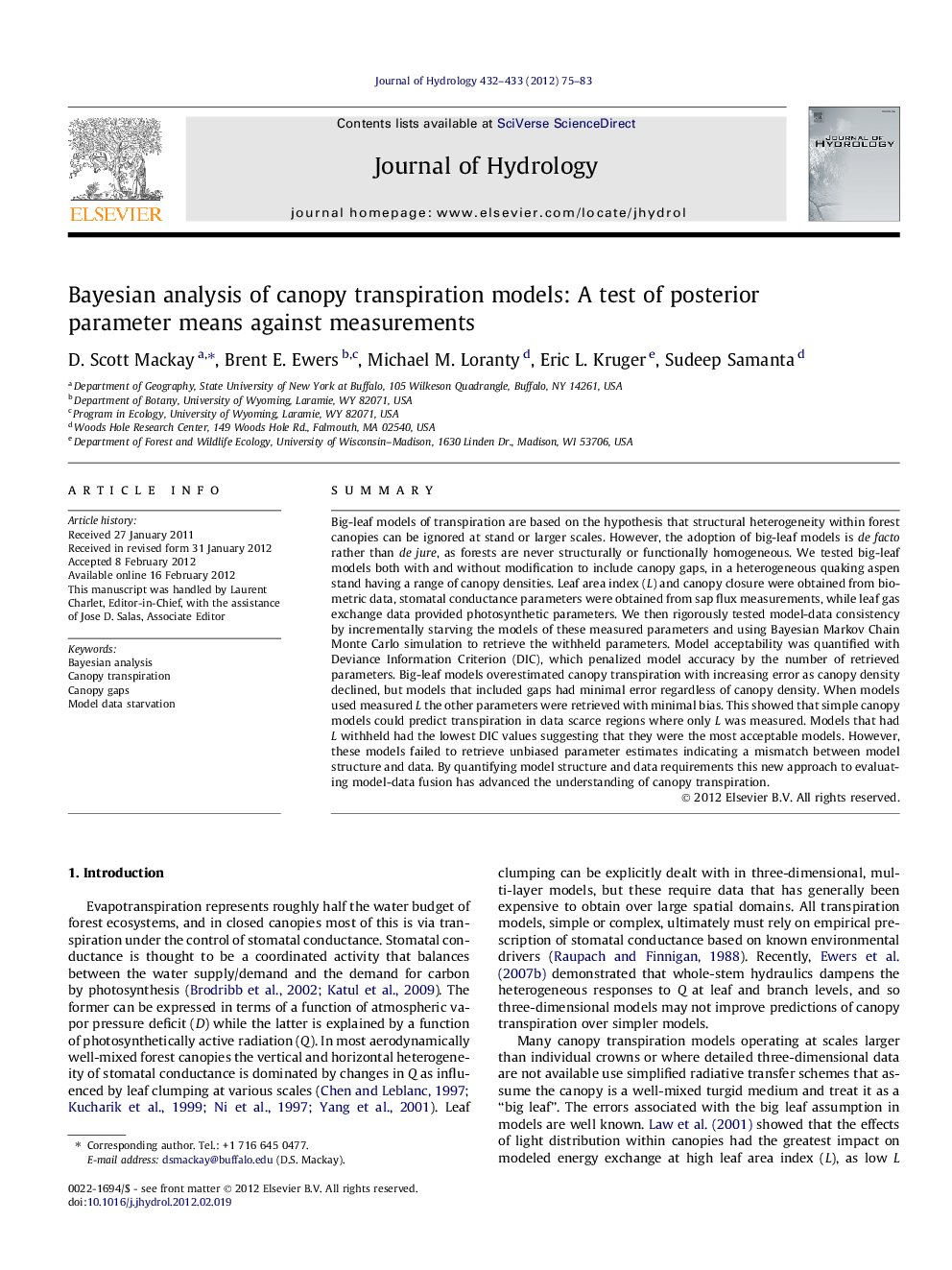| کد مقاله | کد نشریه | سال انتشار | مقاله انگلیسی | نسخه تمام متن |
|---|---|---|---|---|
| 4577045 | 1629995 | 2012 | 9 صفحه PDF | دانلود رایگان |

SummaryBig-leaf models of transpiration are based on the hypothesis that structural heterogeneity within forest canopies can be ignored at stand or larger scales. However, the adoption of big-leaf models is de facto rather than de jure, as forests are never structurally or functionally homogeneous. We tested big-leaf models both with and without modification to include canopy gaps, in a heterogeneous quaking aspen stand having a range of canopy densities. Leaf area index (L) and canopy closure were obtained from biometric data, stomatal conductance parameters were obtained from sap flux measurements, while leaf gas exchange data provided photosynthetic parameters. We then rigorously tested model-data consistency by incrementally starving the models of these measured parameters and using Bayesian Markov Chain Monte Carlo simulation to retrieve the withheld parameters. Model acceptability was quantified with Deviance Information Criterion (DIC), which penalized model accuracy by the number of retrieved parameters. Big-leaf models overestimated canopy transpiration with increasing error as canopy density declined, but models that included gaps had minimal error regardless of canopy density. When models used measured L the other parameters were retrieved with minimal bias. This showed that simple canopy models could predict transpiration in data scarce regions where only L was measured. Models that had L withheld had the lowest DIC values suggesting that they were the most acceptable models. However, these models failed to retrieve unbiased parameter estimates indicating a mismatch between model structure and data. By quantifying model structure and data requirements this new approach to evaluating model-data fusion has advanced the understanding of canopy transpiration.
► Canopy transpiration is modeled with both big-leaf and gap models.
► Big-leaf models produce large errors in clumped canopies.
► We examine the effects of starving the models of data using Bayesian analysis.
► Loss of measured leaf area index has minimal impact on predicted transpiration.
► Loss of measured leaf area index results in flawed model-parameter combinations.
Journal: Journal of Hydrology - Volumes 432–433, 11 April 2012, Pages 75–83